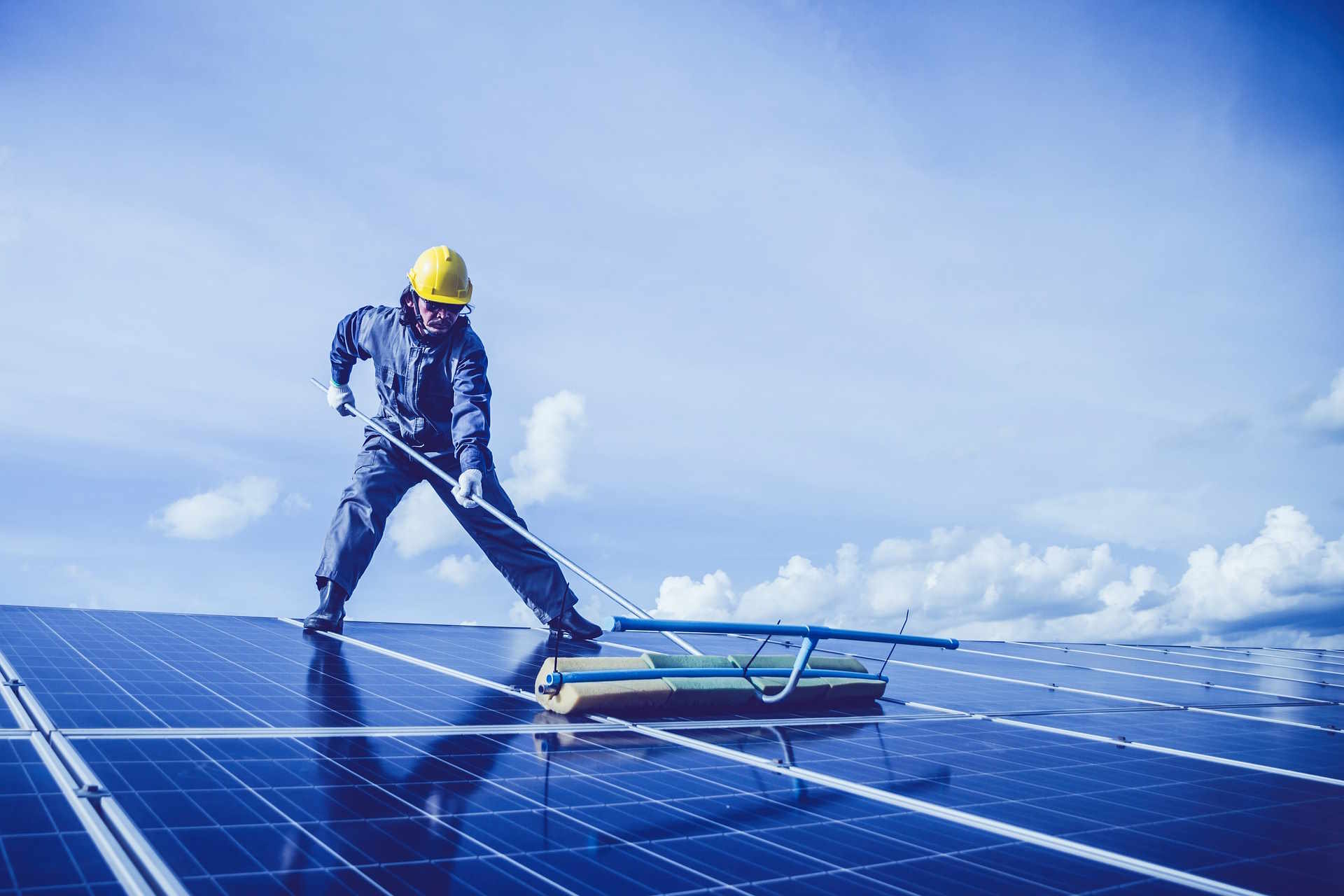Learn more about solar panel cleaning
Maintaining clean solar panels is essential for optimal energy production and long-term system performance. Dust, debris, bird droppings, and environmental pollutants can significantly reduce your panels' ability to convert sunlight into electricity. Regular cleaning not only maximizes energy output but also helps identify potential issues early, protecting your investment and ensuring consistent power generation for years to come.

Solar panels are designed to withstand various weather conditions, but they aren’t immune to the accumulation of dirt and debris that can impact their performance. When panels become dirty, they can lose 15-25% of their efficiency, directly affecting your energy savings and return on investment. Understanding proper cleaning techniques and maintenance schedules helps homeowners maximize their solar system’s potential while avoiding costly mistakes that could damage expensive equipment.
How Regular Maintenance Improves Your Solar Panel Efficiency
Clean solar panels operate at peak performance by allowing maximum sunlight penetration to the photovoltaic cells. Even a thin layer of dust can create shadows and reduce energy production significantly. Studies show that panels in dusty environments can lose up to 7% efficiency monthly without proper cleaning. Regular maintenance also involves inspecting connections, checking for loose mounting hardware, and ensuring proper drainage around the installation area. This comprehensive approach prevents minor issues from becoming major problems that require expensive repairs.
Proven Methods to Extend the Lifespan of Your Panels
Proper cleaning techniques directly impact panel longevity by preventing corrosive buildup and maintaining optimal operating temperatures. Using appropriate cleaning solutions and tools prevents scratching or damaging the anti-reflective coating that protects the glass surface. Gentle cleaning with deionized water and soft brushes removes contaminants without compromising panel integrity. Additionally, scheduling cleanings during cooler parts of the day prevents thermal shock that can crack hot panels when exposed to cold water.
Discover Effective Cleaning Methods for Different Situations
Different cleaning approaches work better for various types of contamination and environmental conditions. Light dust and pollen respond well to simple water rinsing, while bird droppings and tree sap require gentle scrubbing with appropriate cleaning solutions. For ground-mounted systems, homeowners can safely clean panels themselves using telescoping brushes and garden hoses. Roof-mounted installations often require professional cleaning services due to safety concerns and accessibility challenges. Automated cleaning systems are available for large installations but may not be cost-effective for residential applications.
Understanding the Benefits of Regular Maintenance Schedules
Establishing a consistent cleaning schedule based on local environmental conditions optimizes both performance and cost-effectiveness. Areas with frequent rainfall may require less frequent cleaning, while desert regions or locations near agricultural activities need more regular attention. Seasonal considerations include increased cleaning frequency during pollen season, after storms, or in areas with heavy bird activity. Monitoring energy production data helps identify when cleaning is needed, as sudden drops in output often indicate dirty panels requiring immediate attention.
Expert Tips for Safe and Effective DIY Cleaning
Safety should always be the primary concern when cleaning solar panels, especially on rooftop installations. Essential safety equipment includes non-slip shoes, safety harnesses for roof work, and avoiding cleaning during wet or windy conditions. Use only soft-bristled brushes, squeegees, and lint-free cloths to prevent scratching. Avoid harsh chemicals, abrasive materials, or high-pressure water that can damage seals and electrical components. Work during early morning or late afternoon when panels are cooler, and always turn off the system before beginning any maintenance work.
| Service Type | Provider | Cost Estimation |
|---|---|---|
| Professional Cleaning | SunPower Services | $150-300 per visit |
| DIY Cleaning Kit | Solar Maintenance Pro | $75-150 one-time |
| Automated System | Heliotex | $2,000-5,000 installed |
| Annual Maintenance | Tesla Energy Services | $300-500 per year |
Prices, rates, or cost estimates mentioned in this article are based on the latest available information but may change over time. Independent research is advised before making financial decisions.
Maintaining clean solar panels requires balancing effectiveness, safety, and cost considerations. Regular inspection and cleaning schedules tailored to local conditions ensure optimal performance throughout your system’s lifespan. Whether choosing professional services or DIY approaches, proper techniques and safety precautions protect both your investment and personal well-being. Clean panels not only generate more electricity but also maintain their warranty coverage and resale value, making regular maintenance a smart long-term strategy for any solar system owner.


